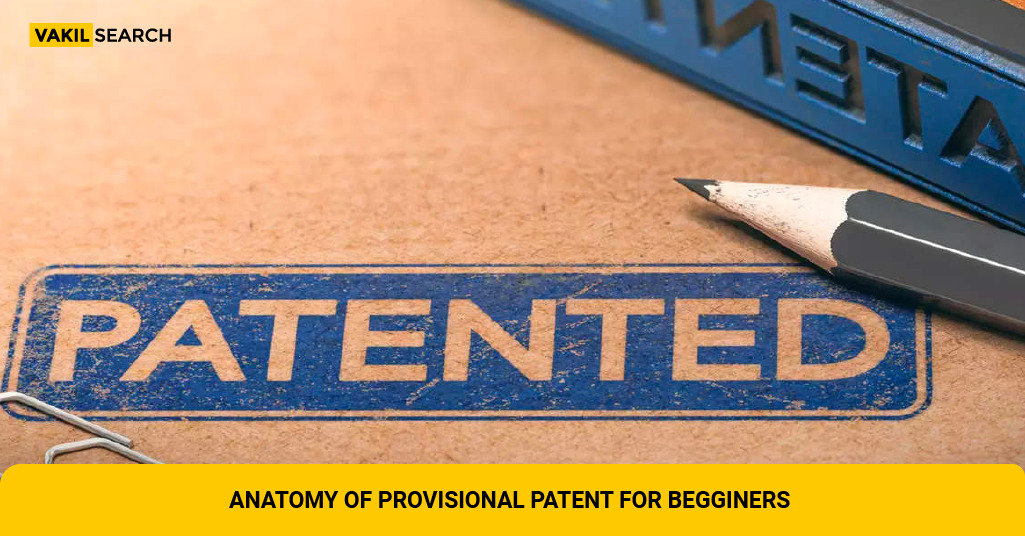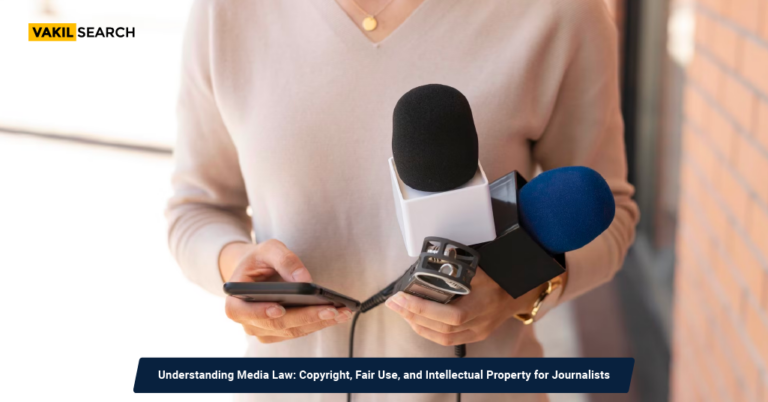This blog post provides a beginner-friendly deep dive into the anatomy of a provisional patent. Vakilsearch will take you through the key parts of a provisional patent, from the summary page to the claim set, to give you a clear understanding of the process. For any queries, contact our legal experts.
Overview on Provisional Patents
In India, provisional patents are a popular option for inventors looking to protect their intellectual property. A provisional patent is a type of patent application that allows inventors to secure a priority date for their invention while they work on perfecting it. Once a provisional patent is filed, the inventor has one year to file a complete patent application that includes all of the necessary details about the invention. In this blog we’ll learn about the anatomy of a provisional patent.
The Anatomy of a Provisional Patent
Provisional patent applications (PPAs) serve as placeholders for standard (non-provisional) patents, giving inventors up to one year to further develop their invention, find financial resources, or assess market conditions. They have a simplified format and fewer requirements than non-provisional patents. Let’s dive deeper into their anatomy:
Summary Page
The summary page is the initial page of your provisional patent application. It should contain a title that accurately describes your invention, followed by your name and contact information. Additionally, it should include the filing date and application number, assigned by the U.S. Patent and Trademark Office (USPTO) after filing.
Drawings
Illustrations or drawings play an essential role in the patent application process. They provide visual support for your invention, making it easier for the examiner and any interested parties to understand it. Remember, each drawing should be well-labelled, with every part number referenced in the specification.
Even though not mandatory, including drawings in your PPA greatly increases the understanding and subsequently, the protection of your invention.
Background of the Invention
This section provides context for your invention. It should describe the problem your invention solves and how existing technologies or products fail to address it. The objective here is to highlight the need for your invention and its uniqueness compared to existing solutions.
Brief Summary of the Invention
The Brief Summary of the Invention serves as a distillation of the key facets of your invention into a concise and cogent overview. This pivotal segment sets the stage for the subsequent in-depth exploration of the invention, summarizing its salient features and providing a simplified explanation of its operation and functionality.
The purpose of this section is twofold. Primarily, it offers a swift and accessible snapshot of your invention to the patent examiner and any interested parties, aiding their understanding without getting caught in the intricate specifics of its mechanics. Secondarily, it lays a conceptual groundwork for the subsequent, more comprehensive description of the invention.
Detailed Description of the Invention
The section titled Detailed Description of the Invention marks a critical juncture within the provisional patent application. This component of the application commands a meticulous and comprehensive examination of the invention in its entirety.
Within this segment, the objective is to magnify the information provided in the brief summary, offering an exhaustive account of the invention’s functioning, its construction, and the methodology it incorporates. It should effectively illustrate the invention’s operation in such an unambiguous and detailed manner that a person possessing ordinary skills in the pertinent field could recreate your invention solely based on this description.
The presentation of this description necessitates a high degree of precision and completeness. It requires the inventor to dissect their invention, exploring and explaining each element and the interactions between them. Furthermore, the description should encompass both unique attributes.
Claim Set
The claim set is not mandatory in a PPA but is strongly recommended. The claims define the legal scope of your patent protection and serve as a legal boundary for your invention. Each claim must be a single sentence, and there are two types: independent claims, which stand alone, and dependent claims, which refer back to an independent claim and further limit its scope.
The claim set is the most technical and complex part of a patent application. Therefore, it is advisable to seek assistance from a patent professional to ensure your claims are correctly structured.
Key Steps to Filing a Provisional Patent Application in India
Now that you understand the anatomy of a provisional patent application, let’s take a closer look at the key steps involved in filing one in India.
Step 1: Conduct a Patent Search
Before filing a provisional patent application, it’s important to conduct a thorough patent search to ensure that your invention is novel and non-obvious. This involves searching through existing patents and patent applications to see if your invention has already been patented. A patent attorney or agent can help you conduct this search and provide you with an opinion on whether your invention is patentable.
Step 2: Prepare Your Provisional Patent Application
Once you have conducted a patent search and determined that your invention is patentable, it’s time to prepare your provisional patent application. As we discussed earlier, this will involve creating a cover sheet, specifications, and drawings. It’s important to ensure that your application meets all of the requirements set forth by the Indian Patent Office.
Step 3: File Your Provisional Patent Application
Once you have prepared your provisional patent application, you will need to file it with the Indian Patent Office. This can be done either online or through a physical filing. If you choose to file online, you will need to create an account on the Indian Patent Office website and follow the instructions provided. If you choose to file a physical application, you will need to submit the application and supporting documents to the appropriate office.
Step 4: Pay the Filing Fees
In order to file a provisional patent application in India, you will need to pay the appropriate filing fees. These fees can vary depending on the type of applicant and the number of pages in your application. It’s important to ensure that you pay the correct fees, as failure to do so can result in your application being rejected.
Step 5: Wait for the Acknowledgement Receipt
After you have filed your provisional patent application, you will receive an acknowledgement receipt from the Indian Patent Office. This receipt will include the filing date of your application and other important information. It’s important to keep this receipt safe, as it will be required when you file your complete patent application.
Step 6: Prepare Your Complete Patent Application
Within 12 months of filing your provisional patent application, you will need to file a complete patent application that includes all of the necessary details about your invention. This will involve expanding on the information provided in your provisional application and ensuring that your application meets all of the requirements set forth by the Indian Patent Office.
Step 7: Convert Your Provisional Patent Application into a Complete Application
To convert your provisional patent application into a complete application, you will need to file a request with the Indian Patent Office. This request should be filed along with your complete patent application and should include a statement that you wish to convert your provisional application.
FAQs:
1. Can a provisional patent be granted as a patent?
Provisional patents themselves are not granted as patents. Instead, they serve as a temporary placeholder allowing the inventor to claim patent pending status for their invention. To get a granted patent, you need to file a non-provisional patent application within 12 months of the provisional filing date.
2. What should be included in a provisional patent application?
A provisional patent application should include a title, contact information, drawings, a background of the invention, a brief summary, and a detailed description of the invention. Including a claim, set is optional but recommended.
3. Does filing a provisional patent application guarantee patent protection?
Filing a PPA does not guarantee patent protection. However, it gives you patent pending status and allows you a 12-month period to file a non-provisional patent application, which could lead to a granted patent.
Conclusion
Provisional patents can be a valuable tool for inventors looking to protect their intellectual property. By understanding the anatomy of a provisional patent and the key steps involved in filing one in India, you can ensure that your application is successful and that your invention is protected. Whether you’re a first-time inventor or a seasoned pro, filing a provisional patent application can be a complex process, but with the right knowledge and guidance, it can be a valuable investment in your intellectual property.
Also Read:










